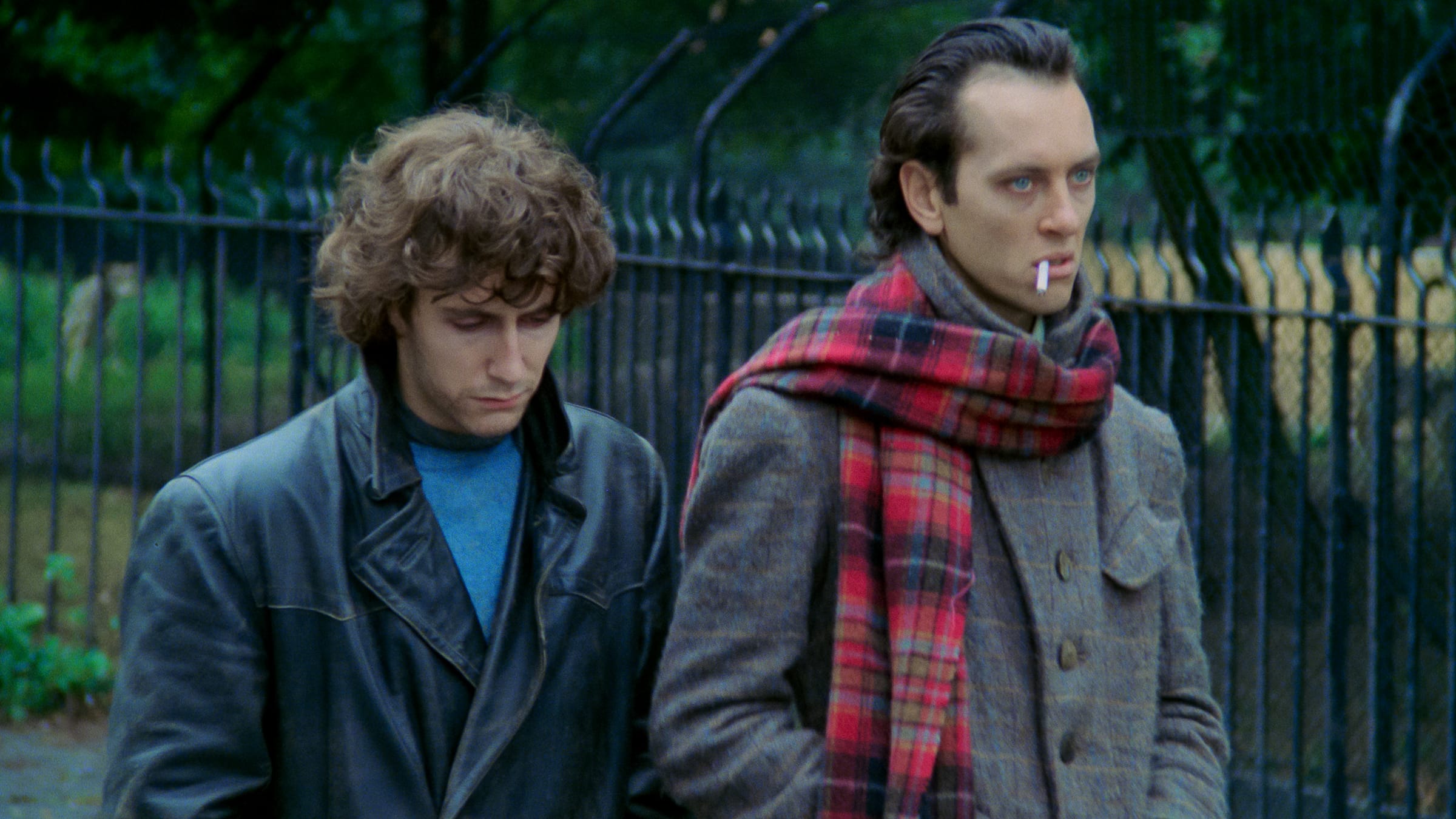RELATED ARTICLE
How to Get Ahead in Advertising: Monstrous Carbuncle
By David Cairns
The Criterion Collection

Bruce Robinson’s gift for colorful language is the most striking mark of his talent. This has doubtless held him back in places where translation is required or such dexterity is not appreciated. He himself once noted that a sentence in Withnail and I (1987), “We’ve gone on holiday by mistake,” hilarious and obviously absurd to a native English speaker, could lose everything as a subtitle: something like “We’ve erroneously gone on holiday” isn’t funny at all.
“The history of its meat clung about this house like a climate.” This is a line from Robinson’s sole published novel, The Peculiar Memories of Thomas Penman, and again it illustrates his gift for the grisly but amusing turn of phrase. His signature tone is disgust.
Robinson began as an actor, eventually rising to the foothills of near stardom—François Truffaut cast him opposite Isabelle Adjani in The Story of Adele H. (1975). But before that disappointment—Robinson loved the director but hated his own performance—there were, as they say, the early years of bitter struggle, and these, along with the decline of the sixties dream, are what Robinson documents in Withnail and I.
Marwood, the “I” character, is nakedly Robinson, wearing a lifelike Paul McGann costume. But Withnail, immortally played by Richard E. Grant, is Robinson, too, though he was substantially inspired by another unemployed actor friend. Marwood embodies Robinson’s paranoid aspect, while the shifty Withnail supplies him with plenty to be paranoid about.
Mainly focusing on these two characters (or one bifurcated one), the film must make a lot out of a little. It’s 1969, and two out-of-work actors, Marwood and Withnail, who share a dilapidated flat in London, take a holiday in the Lake District. Then they come back. That is the plot. Fortunately, the characters’ tendency toward exaggeration means there’s constant drama—they are, after all, actors. Marwood nervously hypes every crisis to hysterical heights, while Withnail oscillates between outrage, bravado, blind terror, and self-pity. If anything actually happened, it might be unbearable.
The script begins, more or less, with this scene description: “Dostoevsky described hell as perhaps nothing more than a room with a chair in it. This room has several chairs.” A brilliant, grimly whimsical joke, but impossible to actually represent on-screen. You can’t point a camera at that joke—all you’ll see is some chairs. But it starts the reader off on a note of mordant elation that the film must find more gradually.

